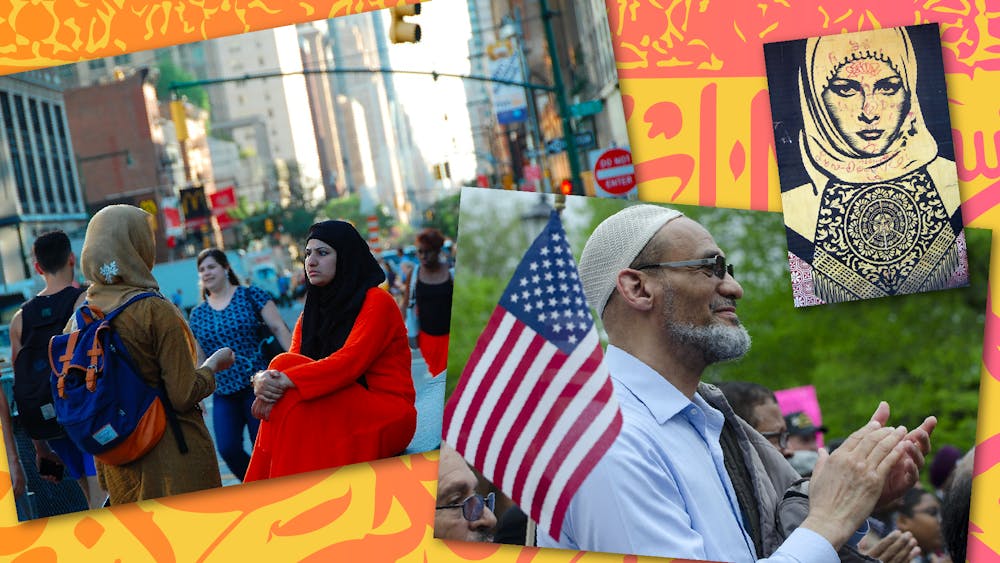What comes to mind first when you think of April? Springtime? A birthday? National Poetry Month? Though not as well known, I think of Arab American Heritage Month.
Now, I want you to think about everything you’ve heard in your life about Arabs or Arab Americans. And everything you haven’t. What’s the picture you have in your head? Is it an olive-skinned, dark-haired, devout Muslim? Someone whose story cannot be told without mentioning the tragic and traumatizing events of September 11th, 2001?
Let me challenge this stereotype for you. Did you know that Arab immigration to the United States has occurred in three main waves over generations? That Arabs follow any number of religions, especially Christianity, Judaism, and Islam? That Arabs are people of many races?
As an American who grew up studying United States history, I can’t seem to recall a single mention of the large and historic Arab American community. I can’t think of a time when we were encouraged to see and learn about this diverse population. The false notion that Arabs, and consequently Arab Americans, are some Muslim monolith has been influenced by media coverage and representation, as well as recent immigration patterns which represent more Muslim Arab immigration than previous waves of immigration. Even with this rich history, Arab Americans enjoy little variety in the stories told about them that are covered by the media or are taught in American history classes. Of course, we are not the only people whose representation in these spaces needs to be adjusted.
One main issue in my past research on Arab Americans and our identity has been the constant inclusion of the events of September 11, 2001 and the subsequent War on Terror. As previously mentioned, Arabs have existed in the United States as contributing members of society for generations. Though 9/11 was certainly a turning point in relations between Arab Americans and the rest of American society, there are other events worth discussing. For instance, consider the lynchings of Fannie and N'oula Romey, a Lebanese American couple whose tragic murders caught local news attention in Florida in the early 1920s when they occurred. This is a story that highlights Arab and Arab American exclusion and persecution in the United States generations before the 9/11 terrorist attacks, but is seldom taught in classrooms.
And through all of this, Arab Americans had the worst of both worlds. The United States Census Bureau defined Middle Easterners and North Africans, many of whom are Arab, as white, but they were simultaneously completely stripped of the possibility of enjoying white privilege in safety, security, and comfort in American society. As a result, these communities were forced to give up even more access to resources targeted toward minority inclusion in society and social mobility, based on the technicality of their supposed whiteness.
In my own life, I’ve felt this frustration as I was turned down from applying for a minority scholarship because the foundation had used the Census categories which strictly defined which exact ethnicities were considered non-white. With not even an “other” or fill in the blank option, I dejectedly quit the application, having already tried to contact the foundation about what I felt was a huge mistake on their part in the categorizations.
On campus, I feel my access to resources is limited by much of the same issue. Lack of visibility for Arab students, Middle Eastern students, and North African students has left these communities’ identities in limbo. I am not quite white enough to benefit from the privilege associated with whiteness in American society, nor am I a person of color who fits into one of the few recognized categories the government and society imposes upon people of color. Arab and Arab American students on campus are pushed into odd spaces, such as the Arab cultural organization within the Asian Pacific Student Coalition (APSC).
From my experience as a former Penn Arab Student Society board member who worked with APSC, I have much appreciation for inclusion into these spaces — their members and resources are welcoming and I am very grateful for that fact. This, however, does not take away from the lack of visibility for Middle Eastern and North African (MENA) students and Arab students on campus. Penn should make more resources available specifically for these populations to ensure our full inclusion on campus and a recognition of our ability to identify as people of color, per our personal experiences.
While not every MENA or Arab American person chooses to identify as a person of color, being given the choice to do so and to benefit from minority resources is a crucial step towards acknowledging the long and tragic history of these populations in the United States.









